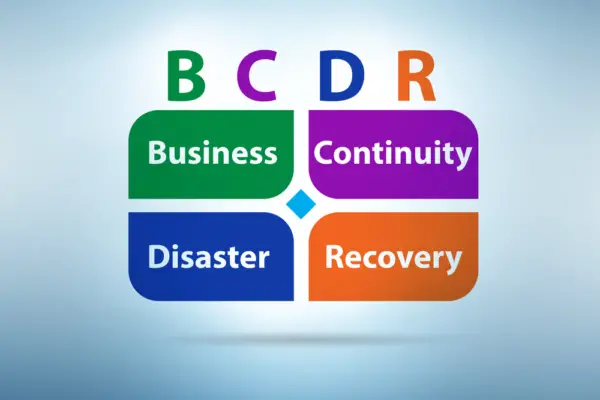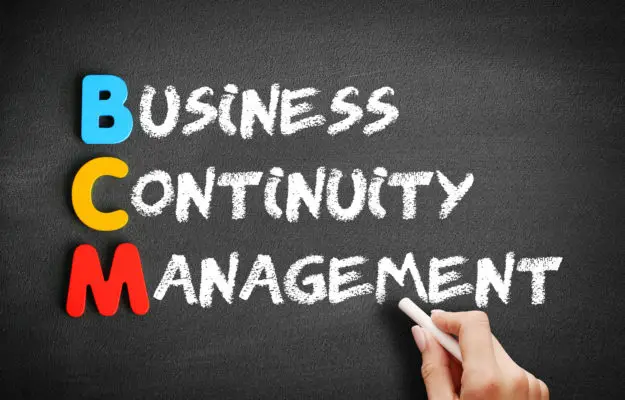A Business Continuity Plan (BCP) is a documented process that outlines how an organization will continue to operate during an unplanned disruption in service.
The plan typically includes procedures for all phases of recovery as defined in the Business Continuity Strategy.
The goal of a BCP is to allow an organization to continue its operations during and after a disruption, minimize downtime, and ensure that essential services can be provided to customers.
There are many templates available to assist with creating a BCP, including those provided by Smartsheet, FINRA, and FEMA.
Today’s businesses face many unexpected challenges, from natural disasters to digital transformation.
A business continuity plan (BCP) is an essential strategy that helps a company keep running during and after such unforeseen events.
It involves identifying and protecting critical business functions and assets to reduce the damage from disruptions.
A good BCP helps companies safeguard their operations, minimize loss of revenue, and maintain a competitive advantage in a fast-moving market.
For example, if a flood hits, a business with an effective BCP might switch to remote work quickly, ensuring key business functions continue while the office is closed.

What is Business Continuity Planning?
Business Continuity Planning (BCP) is a comprehensive process companies use to maintain normal business operations during and after unexpected events.
It involves identifying potential risks, assessing their impact, and planning recovery strategies to handle them.
This strategic planning ensures the most important parts of the business, such as essential services and critical operations, can keep going.
For instance, if a natural disaster hits, a company with a robust BCP might have backup systems and a disaster recovery plan to protect data and ensure continuous service delivery.
Why is Business Continuity Planning Important?
Business continuity planning is crucial for companies as it prepares them to effectively respond to various potential disruptions, from human error to supply chain failure.
By understanding and preparing for these risks, a company can develop an effective business continuity plan, ensuring rapid recovery and continuation of its critical operations.
A well-prepared company can swiftly handle emergencies, safeguard its reputation, and maintain customer trust, ultimately keeping the business running smoothly.
Natural Disasters and Business Disruptions
Natural disasters and other business disruptions pose significant threats to companies. Buildings might get damaged, essential services disrupted, and supply chains interrupted.
Emergency management and crisis communications become crucial as they facilitate coordinated responses and recovery efforts.
Emergency teams, including first responders and the company’s crisis management team, play a vital role in helping businesses recover and resume operations.
For example, in the aftermath of a flood, these teams might assist in restoring critical functions and setting up alternative business locations.
Types of Natural Disasters
Preparation for various natural disasters is a key aspect of business continuity planning.
Each type of disaster, such as hurricanes or earthquakes, requires tailored response plans to minimize business interruption and ensure quick recovery.
Regular testing of these plans, involving cross-functional teams, is essential to validate their effectiveness.
For instance, a company in a hurricane-prone area should regularly test its backup power solutions and employee evacuation procedures.
Types of Business Disruptions
Business disruptions can range from natural events to technological failures and human factors.
Recognizing these diverse threats allows companies to prepare comprehensive business continuity plans, including recovery strategies for different scenarios.
These plans should consider all aspects of the business, including the potential impact on business processes, staff availability, and technology infrastructure.
It is absolutely crucial for businesses to take proactive measures in order to mitigate risks and effectively minimize the negative impact of any potential disruptions.
Emergency Responders and Their Role in Disaster Recover
Emergency responders, including firefighters, police, and medical personnel, collaborate with business continuity professionals to manage emergencies and facilitate recovery.
Effective communication between these parties, guided by emergency contact and notification procedures, is critical for a swift response.
Businesses should integrate emergency response plans within their broader BCP, detailing how to collaborate with responders to restore critical operations quickly.
Overview of the Business Continuity Plan Process
Creating a BCP involves a detailed process, starting with assembling a business continuity team comprising key employees and executive leaders.
This team undertakes a thorough risk assessment and business impact analysis to identify and prioritize risks.
The next step involves devising recovery strategies and writing a detailed plan, including crisis management and business recovery protocols.
Regular testing of this plan is crucial to ensure its effectiveness in various disaster scenarios.
Establishing a Team for the Plan’s Development
The development of a BCP requires a cross-functional team led by senior management. This team should involve leadership from various business units to ensure a comprehensive plan that covers all critical business functions.
The team’s responsibilities include creating action plans and ensuring the business’s readiness to respond to disruptive events.
They aim to develop a successful business continuity plan that aligns with the company’s objectives and priorities.
Conducting a Risk Assessment and Business Impact Analysis
The BCP team conducts a risk assessment and business impact analysis to identify potential risks, such as digital threats, and their possible effects on business operations.
This analysis helps understand the potential financial impact and the necessary steps to protect key business functions and services.
The outcome of this analysis informs the development of recovery strategies, ensuring the company can manage and recover from disruptions effectively.
Identifying Critical Functions and Services
Identifying critical functions and services is a key step in the BCP process. This involves determining which business processes are essential for the company’s survival and setting a recovery time objective for these functions.
The plan should outline how to maintain or quickly restore these essential functions during a disruption, ensuring minimal impact on the company’s operations.
Devising Strategies for Recovery and Resumption of Operations
Developing effective recovery strategies is essential for resuming operations after a disruption.
This includes establishing backup strategies for critical systems, defining roles within the crisis management team, and setting up alternative operational functions.
These strategies should be regularly tested and updated to align with changes in the business environment, ensuring the company can quickly adapt to and recover from unforeseen events.

Writing the Plan Document and Testing it Regularly
Documenting the BCP is a critical step, involving the creation of a business continuity plan template and a checklist to ensure all aspects are covered.
Regular plan testing, following established testing procedures, is essential to identify and address any gaps.
This document should be accessible and understood by all key stakeholders, ensuring everyone is prepared to implement the plan during a crisis.
Frequently Asked Questions
How Does a Business Continuity Plan Differ From a Disaster Recovery Plan?
A business continuity plan focuses on maintaining or quickly resuming business functions during a disruption, whereas a disaster recovery plan specifically addresses restoring IT systems and data.
Both plans are integral to a comprehensive business continuity management program.
What Are the Key Components of a Business Continuity Plan?
Key components of a BCP include risk assessment, business impact analysis, crisis management, incident response, recovery strategies, communication plans, and regular maintenance and testing.
These components ensure the company is prepared for various disaster scenarios, from major disasters to minor incidents.
How Often Should a Business Continuity Plan Be Reviewed and Updated?
A BCP should be reviewed and updated regularly, at least annually, or whenever significant changes occur in the business or its environment.
This ensures the plan remains relevant and effective in addressing current risks and business needs.
What Are Some Common Challenges Businesses Face When Implementing a Business Continuity Plan?
Common challenges include gaining buy-in from senior management, identifying and protecting critical business functions, training employees, and ensuring regular testing and updating of the plan.
Overcoming these challenges is crucial for the successful implementation of a BCP.
Are Any Legal or Regulatory Requirements for Businesses to Have a Business Continuity Plan?
Yes, some industries have legal or regulatory requirements for having a BCP.
For example, financial institutions and healthcare organizations often have specific compliance requirements related to business continuity.
It is advisable for businesses to consult with legal experts or business continuity consultants to understand their obligations.

Conclusion
A business continuity plan is essential for preparing and responding to emergencies that could disrupt normal business operations.
Businesses can mitigate risks and ensure quick recovery by protecting critical functions and services and regularly updating their plan, thereby safeguarding their employees, customers, and overall business health.

Chris Ekai is a Risk Management expert with over 10 years of experience in the field. He has a Master’s(MSc) degree in Risk Management from University of Portsmouth and is a CPA and Finance professional. He currently works as a Content Manager at Risk Publishing, writing about Enterprise Risk Management, Business Continuity Management and Project Management.

